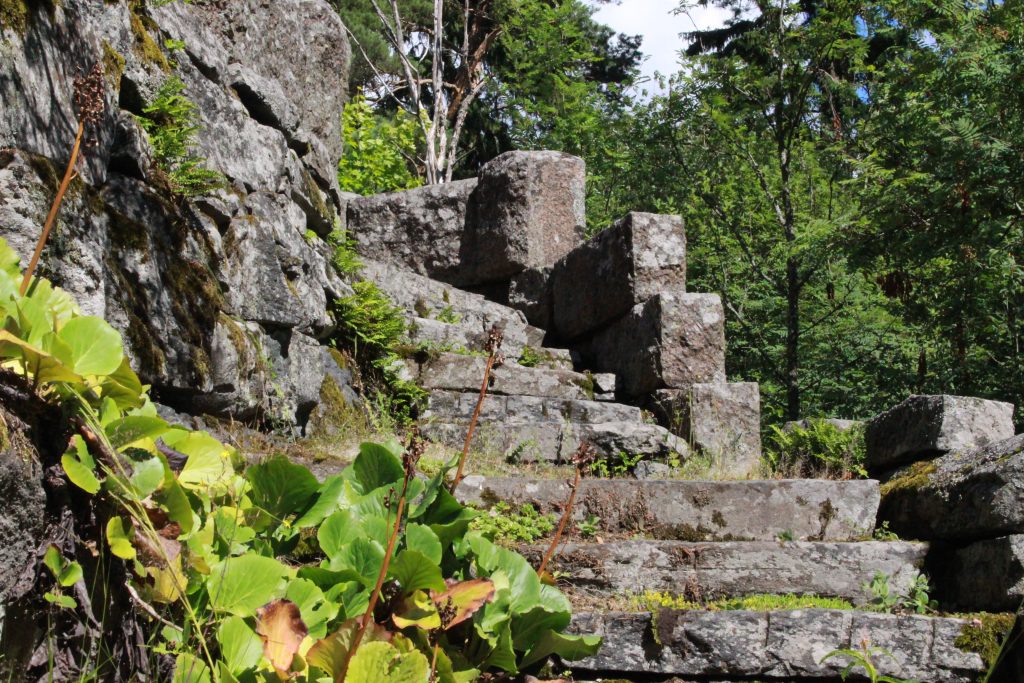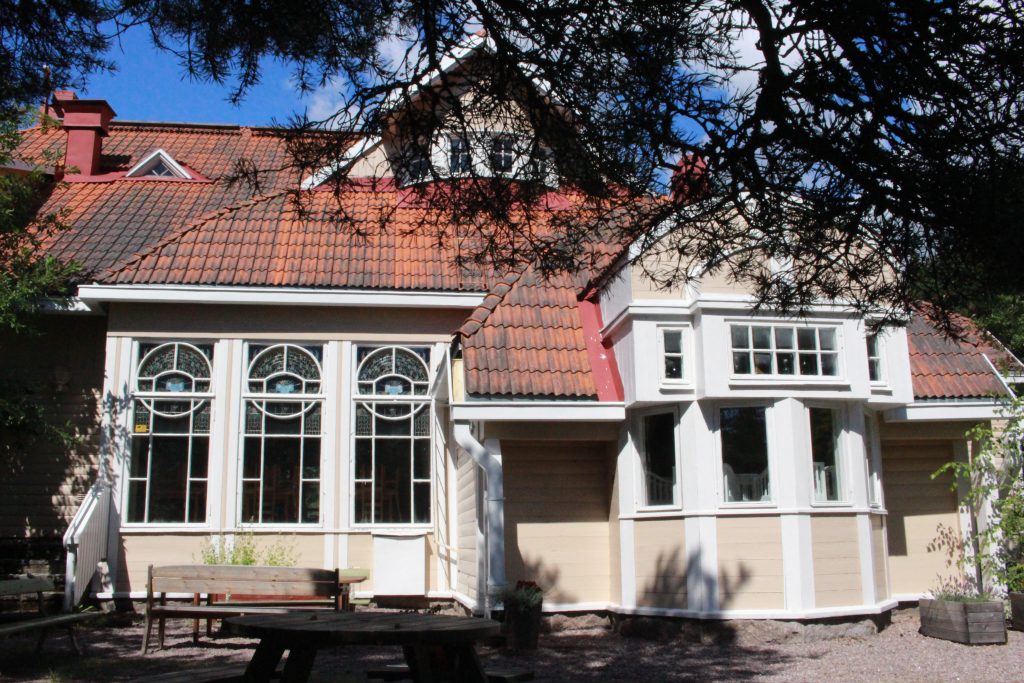
History of Meriharju
Villa Meriharju was completed in 1910. It was commissioned by Gustaf ‘Gösta’ Adolf Alfons Björkenheim (1866–1918), an industrialist who worked in the management of two forest industry companies, namely Kaukas Oy and Kymin Oy, at the beginning of the 20th century.
Villa Meriharju was completed in 1910. It was commissioned by Gustaf ‘Gösta’ Adolf Alfons Björkenheim (1866–1918), an industrialist who worked in the management of two forest industry companies, namely Kaukas Oy and Kymin Oy, at the beginning of the 20th century.
Married twice
Björkenheim’s marriage to Thyra Krogius resulted in six children. After Thyra’s death, Björkenheim married nurse Märta Heikel. This marriage resulted in one child, but the marriage ended after only a few months, as Björkenheim and other leaders and clerks of Kymin Oy were shot by Red Guards in Koria in 1918.
Märta Björkenheim later became a highly active organisation influencer, serving in the management of the Lotta Svärd Organisation, for example.
Villa Meriharju’s architect, Selim A. Lindqvist
Lindqvist (1867–1939) apparently became friends with Björkenheim and also designed other buildings for his family. Lindqvist was one of the best-known representatives of the Art Nouveau style in Finland, and he has designed numerous buildings of architectural importance in Helsinki.
In terms of style, Villa Meriharju represents late Art Nouveau. The preserved interior of the building was repaired under the supervision of the City Museum in the 1990s. On the east side of the building, which faces the sea, there is a garden designed by garden architect Paul Olsson. Because of their extent, the garden’s preserved stone terraces are unique in the villa culture of Helsinki.
Between Villa Meriharju and the fortifications is a stone-paved scenic path that may be linked to the garden plan drawn up by Paul Olsson for Villa Meriharju.
The building was later altered, but the facade facing the sea has remained almost in its original state.
- 1915–1917 The Russians carry out fortification work in Mustavuori and Uutela during World War I
- 1917–1945 Villa Meriharju is first used by the army and then left empty.
1945– Used as a home help college
Väestöliitto (Family Federation of Finland) rented the main building of Skata Manor (Meriharju), which was located 20 km from Helsinki at the time. The home help college was born out of a great need to lessen the demand for home help in families with children. It started operating in October 1945.
Villa Meriharju had fallen into a state of disrepair and needed a great amount of work in order for the building to at least reach the basic level required to satisfy the college’s needs. The college purchased beds, mattresses and blankets from the army and rummaged through the storage facilities of factories and wholesalers. Students were asked to bring mushrooms and berries with them. Stopgaps and substitutes were part of everyday life.
The first home helpers graduated from the college in 1947. In 1948, Väestöliitto acquired Skata Home Help College and renamed it Meriharju Home Help College.
1969 – The City of Helsinki acquires Meriharju from Väestöliitto
Since 1970, Meriharju Course and Camp Centre has been under the control of Youth Services, serving as a venue for numerous camps, events and school camps.
Present day
In 2010, the operations of the Nature House for Young People were transferred from Paulig Villa in Töölö to Meriharju, and the location became known as Meriharju Nature House. Even now, camps, events and school camps keep the building full of life throughout the year. Meriharju Nature House also organises popular nature school programmes and training.
Today, the place is referred to as Meriharju Nature House and Camp Centre. However, the beloved building has many names.

